Best shoes for newborns

Sarah Johnson, MD
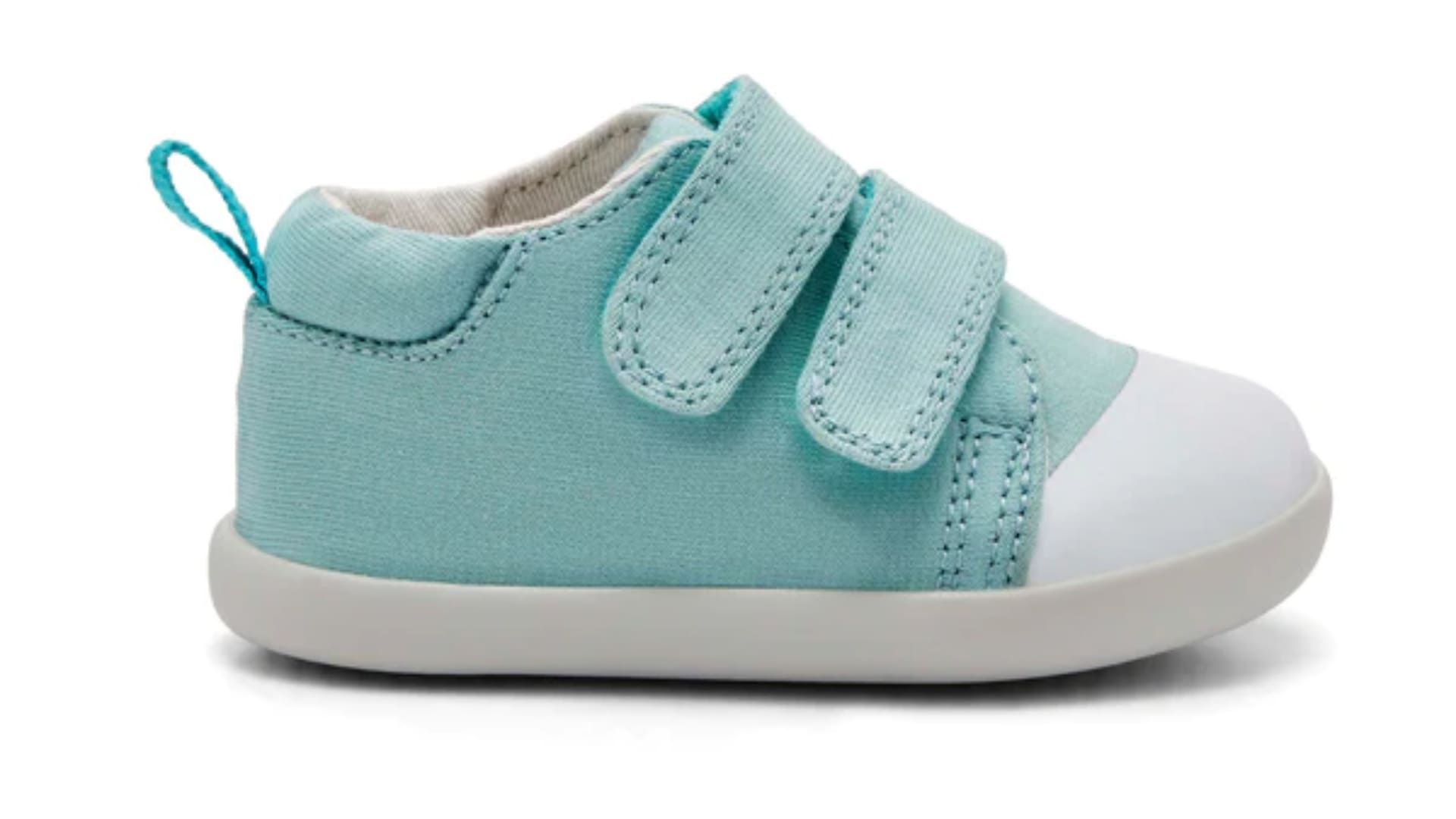
There are plenty of infant shoes out there. There's a shoe style for every kid, whether soft-soled or hard-soled, sandals or sneakers. However, if your child has only recently begun to walk, certain shoes will be more appropriate for their foot development.
There are fewer brick-and-mortar stores for newborns in the United States these days, so it can be difficult to find a place to get good foot measurements and verify your child is wearing the appropriate shoes for their foot size and developmental stage. To make up for it, we've gathered expert sources to help you find the perfect shoes for your baby or toddler. We've also produced a downloadable chart so you can measure their shoe size at home.
- When do babies start wearing shoes?
- How to choose baby walking shoes
- Soft-soled shoes vs. hard-soled shoes for babies and toddlers
- How to measure baby and toddler shoe sizes
- How We Chose The Best Baby Shoes
- When Should Babies Start Wearing Shoes For Walking?
- What Types Of Shoes Are Best For A Baby Learning To Walk?
When do babies start wearing shoes?
Around their first birthday, or when infants start walking. Once your kid has taken his or her first steps, you should start thinking about shoes. Shoes are not required for learning to walk, however. In fact, going barefoot is the ideal method for a newborn to learn to walk. The only rationale for wearing shoes while learning to walk is to protect their feet from damage while outside.
And, as cute as they are, baby shoes are unnecessary if they have not yet learned to walk. So, avoid the impulse to put shoes on your two-month-old (unless it's for gorgeous picture sessions, of course), because wearing shoes all the time can impair their foot development. The ideal option for foot development is to wear bare feet or socks. So, while your baby's feet are growing and developing, it's better not to imprison them in shoes.
If your baby isn't walking yet and you're concerned about their feet getting cold, booties are an excellent option. They're basically incredibly thick socks that are flexible enough to allow baby's feet to develop naturally even after daily wear. Even in really cold weather, booties with extra socks underneath should suffice for a younger baby's feet. And for outdoor walks, many parents also look for a lightweight newborn travel stroller that keeps their little one warm and supported.
better with Soula

Support for every woman:
✅ A Personalized Plan to reduce anxiety and overthinking
✅ 24/7 Emotional Support whenever you need it Cycle-Aligned Mental Health Tracking — monitor your mood and symptoms in sync with your period
✅ Real-Time Insights into your energy levels and emotional state
✅ Bite-Sized Exercises to help you return to a calm, balanced state — anytime, anywhere
How to choose baby walking shoes
Look for baby shoes with these features:
- Comfortable (the correct size)
- Firm yet flexible heel cup
- Nonskid rubber sole
- Pull loop at the back
- Slight rise in the toes
- Soft, flexible sole (You should be able to bend the shoe in half, touching toe to heel, but the sole should still be thick enough to protect against rocks and sharp objects.)
- Velcro straps
- Wide toe box
According to the American Academy of Pediatrics (AAP), the two most important factors to consider when purchasing baby and toddler shoes are comfort (we'll explain how to ensure a proper fit shortly) and nonskid rubber soles (to minimize slips and falls).
They also advise against spending too much money on baby and toddler shoes, as they will most likely outgrow them within a few months. (Your child's feet will grow quickly until the age of two, and they will not slow down significantly after that.) And while you're planning essential purchases, it may be helpful to explore gentle newborn bottle options that support your baby’s feeding routine.
Remember that barefoot is preferable, but if you can't let your walking infant go barefoot, choose a soft, flexible-sole shoe to provide protection while still providing many of the benefits of being barefoot, such as the ability to move and bend the foot freely.
The finest toddler shoes should include velcro straps for adjustment (and to help your toddler gain independence), a firm yet flexible heel cup, a wide toe box with a modest rise, and a pull loop in the rear to help your toddler get their feet in.
Soft-soled shoes vs. hard-soled shoes for babies and toddlers
Soft-soled shoes are lightweight and flexible, making them ideal for new walkers as they learn to balance and position their feet on the ground. These are not to be mistaken with soft-soled moccasins or booties; soft-soled shoes suitable for walking babies and younger toddlers feature a strong heel cup and thick enough soles to protect delicate feet from sharp or rough surfaces.
Hard-soled shoes are hefty, inflexible, and usually have thicker soles. They should be avoided by new walkers since their rigidity can hinder foot development and make it more difficult to learn to walk. Once your toddler begins running, jumping, and climbing, hard-soled shoes provide additional stability, according to Noland.
How to measure baby and toddler shoe sizes
The most important aspect of purchasing infant and toddler shoes (or any sort of shoes, for that matter) is to get a suitable fit. Here's how to ensure that your youngster is wearing the correct size shoes:
- Print out a shoe for babies and toddlers.
- Place the chart on a flat, firm surface. Have your child stand and place their bare foot on the chart, matching their heel to the heel marker at the bottom. Make sure their toes are loose and not curled under.
- Use a pen or pencil to draw horizontally where your child's longest toe lands. Mark all the way to the inch ruler on the side; because shoe sizes vary between brands, it's more precise to measure your child's shoe size in inches and compare it to each brand's size chart. Make sure to measure both feet in case the sizes differ. If one foot is larger than the other, get shoes that fit the larger size.
- When your child gets shoes to try on, check how they fit. Allow your child to stand while wearing the shoes, then use your finger to press down on the top of the toe box. The AAP suggests leaving about a finger-width or half-inch gap between the tip of the big toe and the front of the footbed (inside the shoe).
It could be difficult to measure your child's toes accurately with your finger in shoes with more hard tops. Then, according to Noland, "trust your gut" and "observe how they look (when) standing." The shoes are probably not the right size if your child walks differently in the shoes than they usually do, appears to be in pain, or has their feet clenched.
Also, because baby and toddler feet grow so quickly, the American Academy of Pediatrics advises measuring shoe fit once a month.
Best Baby Shoes Overall
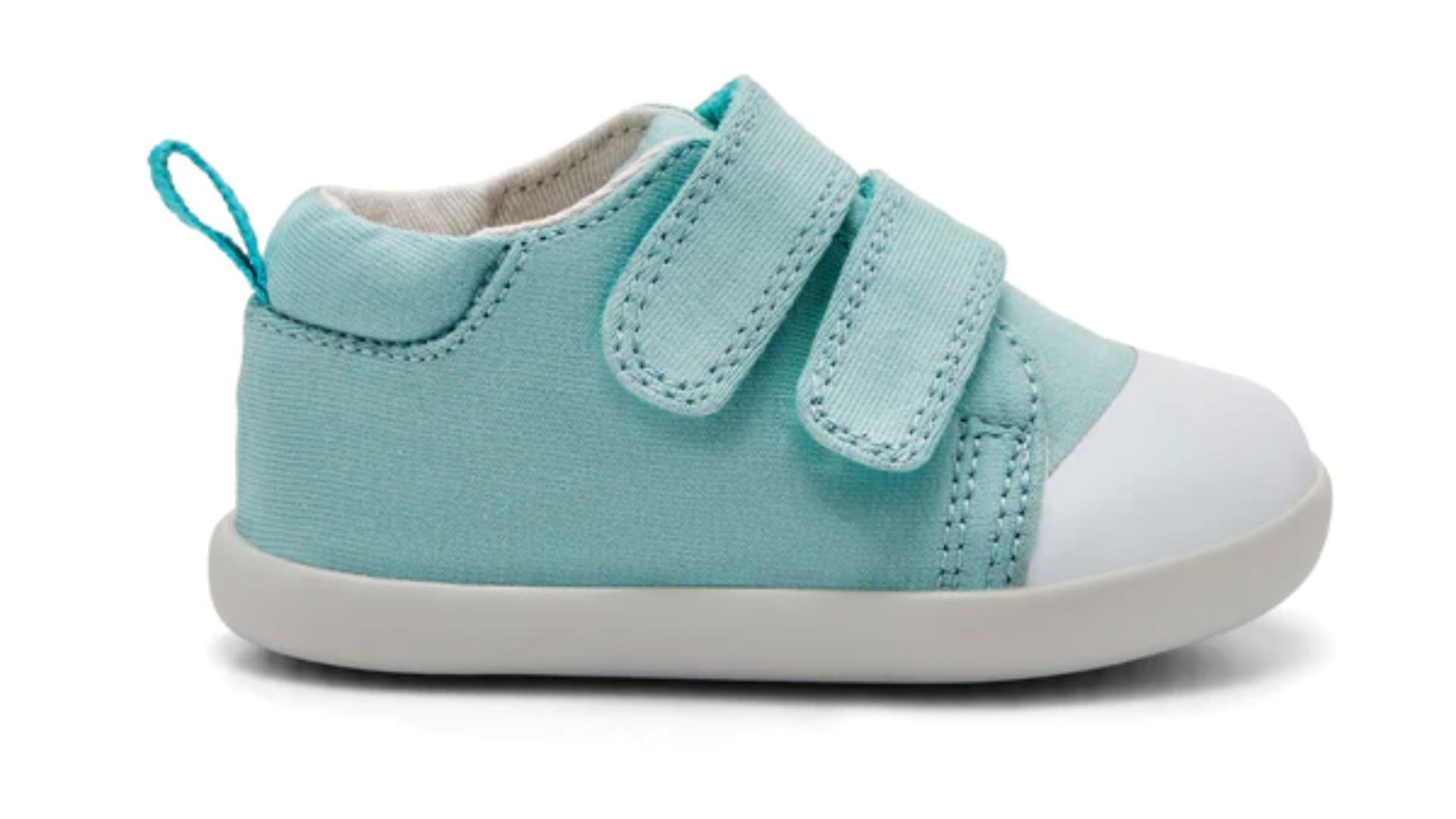
Ten Little First Walker
These visually appealing and simple to use Ten Little sneakers are ideal for newborns who are just learning to walk. These are incredibly flexible and light, providing exactly the right amount of support without ever feeling overly rigid or stiff. The flat soles and foot-shaped toe box encourage natural development and won't impede their learning of how to walk. Their twin Velcro straps are one of our favorite features. Sliding these shoes on a fidgety toddler's foot is like heaven. You can easily pull these open wide thanks to the straps, so you may modify them to fit the thickness of your baby's socks.
Best Budget Baby Shoes
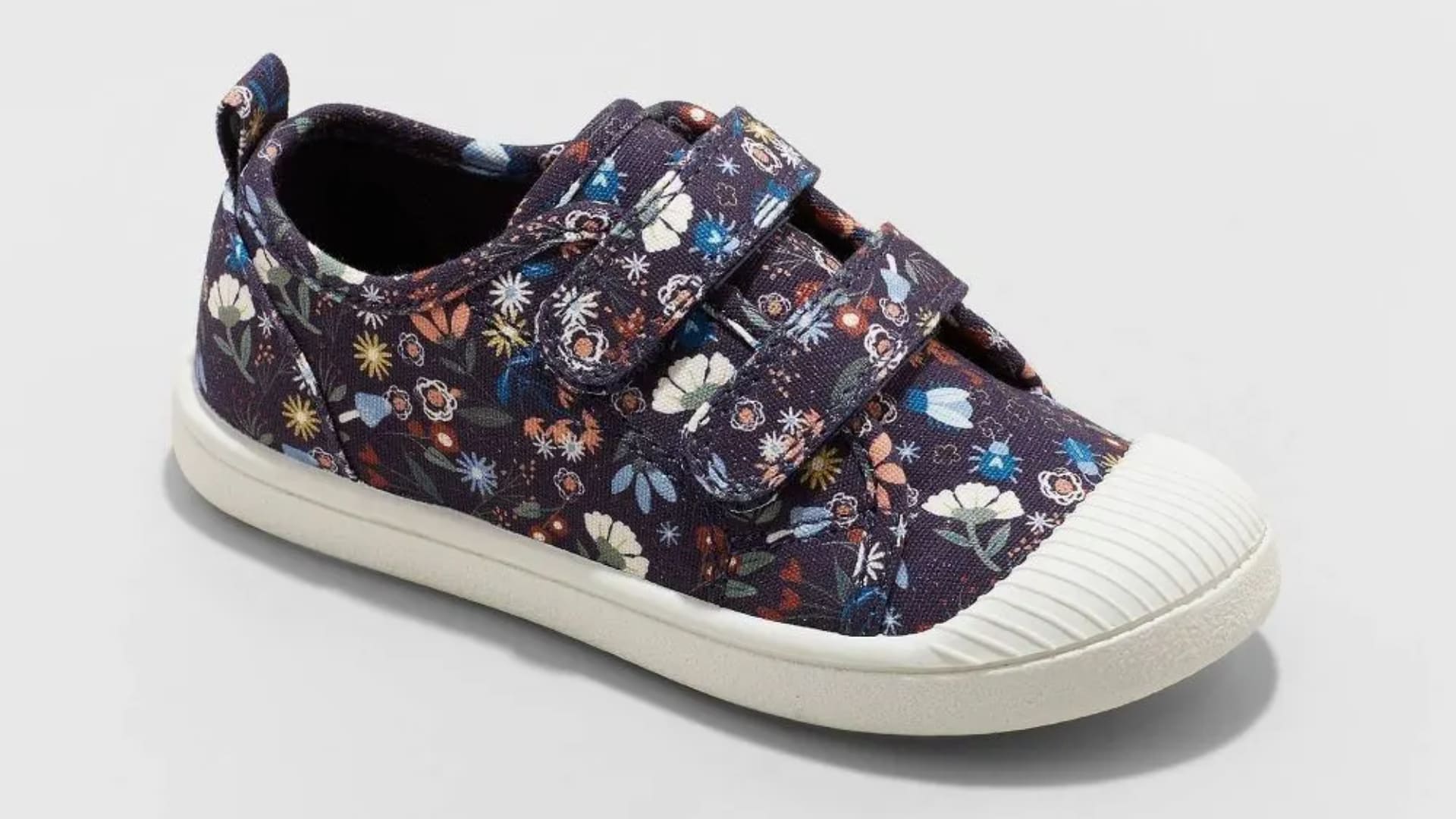
Cat & Jack Toddler Parker Sneakers
Babies outgrow shoes quickly, so occasionally it makes sense to purchase a pair that is less expensive. These sneakers are so inexpensive, so sturdy, and so comfy that my firstborn owns a pair in almost every size. To make putting the shoes on easier, they have a heel strap and a hook-and-loop fastening.
One thing to keep in mind is that the sole of this shoe can be a little too stiff for pre-walkers. However, these shoes are perfect for early walkers who are beginning to explore the world outside of their house. Because they come in a variety of patterns in addition to plain black, your child will enjoy choosing their favorite pair.
Best Splurge Baby Shoes

See Kai Run Stevie First Walker
Given that they are meant to fit your kid for a limited period of time, these APMA-approved shoes are somewhat costly. However, for some, particularly parents whose infants have plump feet, they may be the best option. The APMA considers a supporting heel cup, flexible soles, and a big toe box that won't suffocate growing feet to be essential components of a quality baby shoe. To make it easier for you or your child to put on the shoes, they also have a hook-and-loop fastening and a loop on the heel. They also come in a variety of hues and designs, including two variations of the Very Hungry Caterpillar print.
Most Stylish Baby Shoes
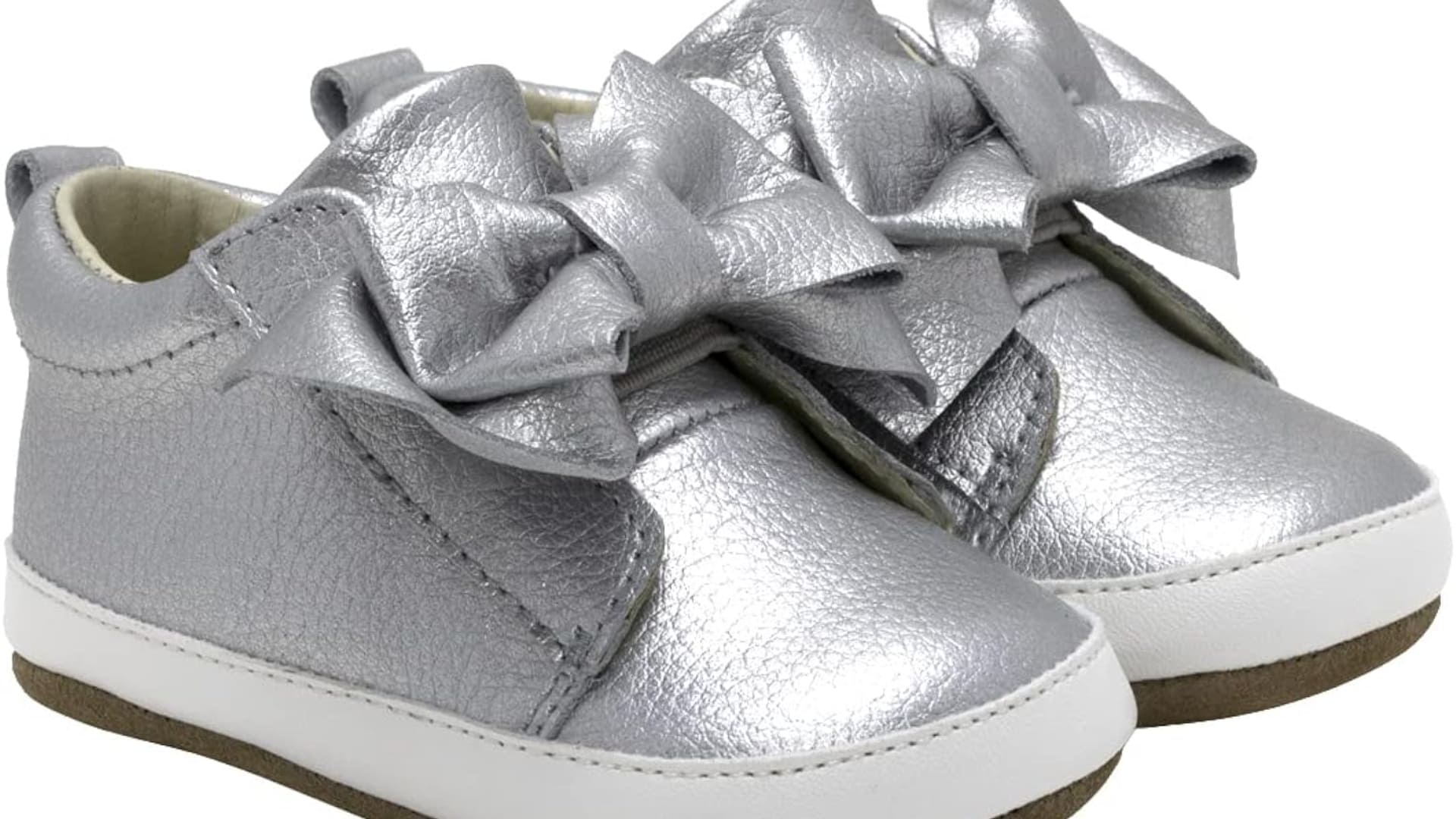
Robeez First Kicks
Robeez's First Walkers collection offers an array of adaptable styles and alternatives, ranging from neon pink high heels to charming sherpa lace-up boots. The majority of types are hook-and-loop or slip-on, although many also contain imitation bows and laces. A draw tab near the heel is seen on many. With its flexible sole and split rubber bottom, these APMA-approved shoes help reduce the chance of slips and falls.
To select the perfect style for your baby, make sure to browse both the boys' and girls' sections of the Amazon site.
Best Baby Sandals
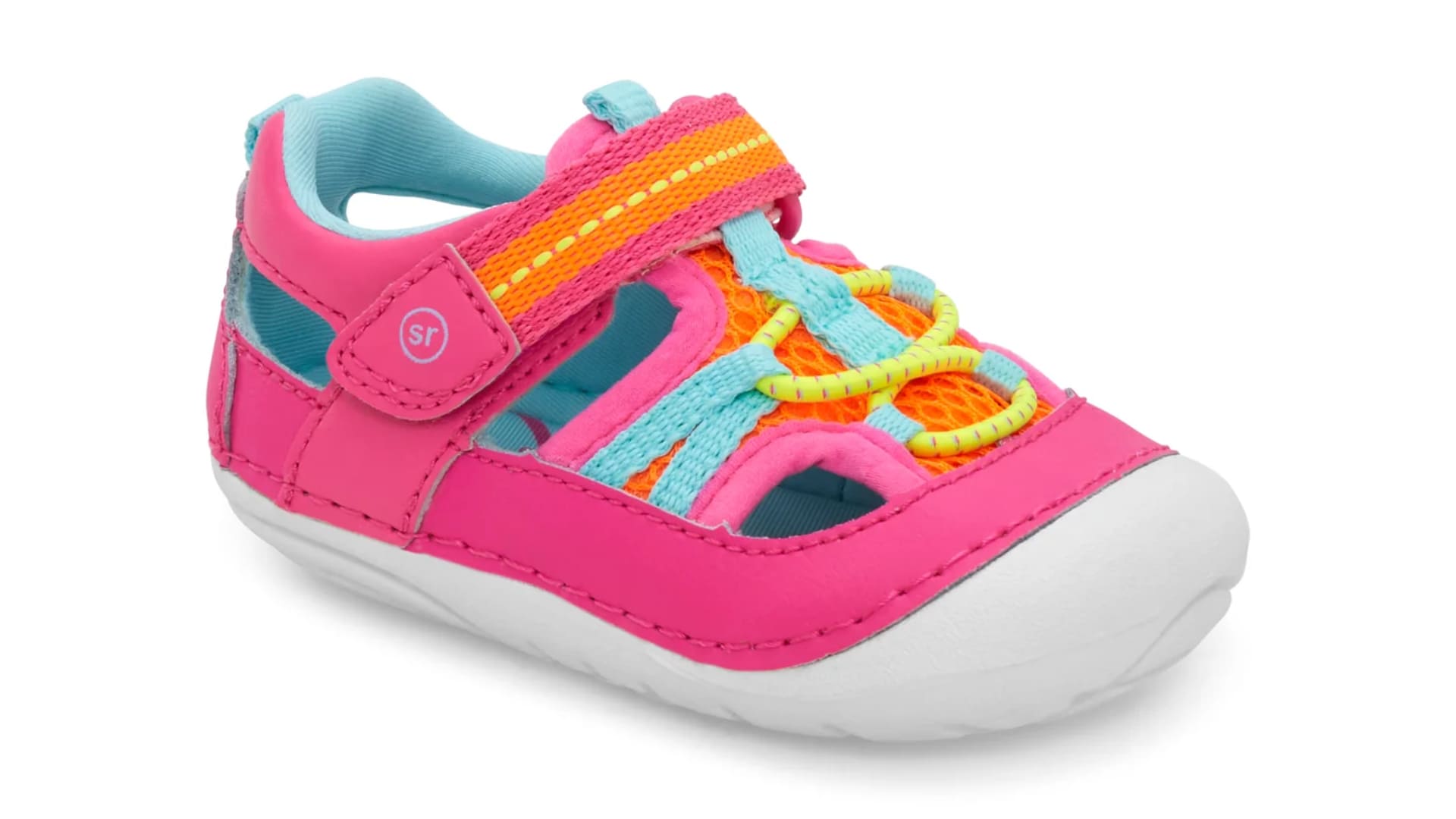
Stride Rite Tobias Sneaker Sandal
Sandals are very breathable, which is vital for infant shoes, according to McSorley. These sandals are another excellent choice for babies with fat tootsies because they are APMA approved and are available in half and wide sizes.
Little feet can easily put on and take off the Tobias sandals thanks to their hook-and-loop fastening and pull tab on the heel. Although they still feature the standard sandal openings, they are sufficiently robust to keep your baby's foot safe. The kicks include a protective closed-toe design with a sticky bottom; wearing sandals at daycares is frequently required by safety regulations. Although they aren't waterproof, a number of reviews claim they work well as water shoes and dry completely on their own.
Best Winter Baby Shoes
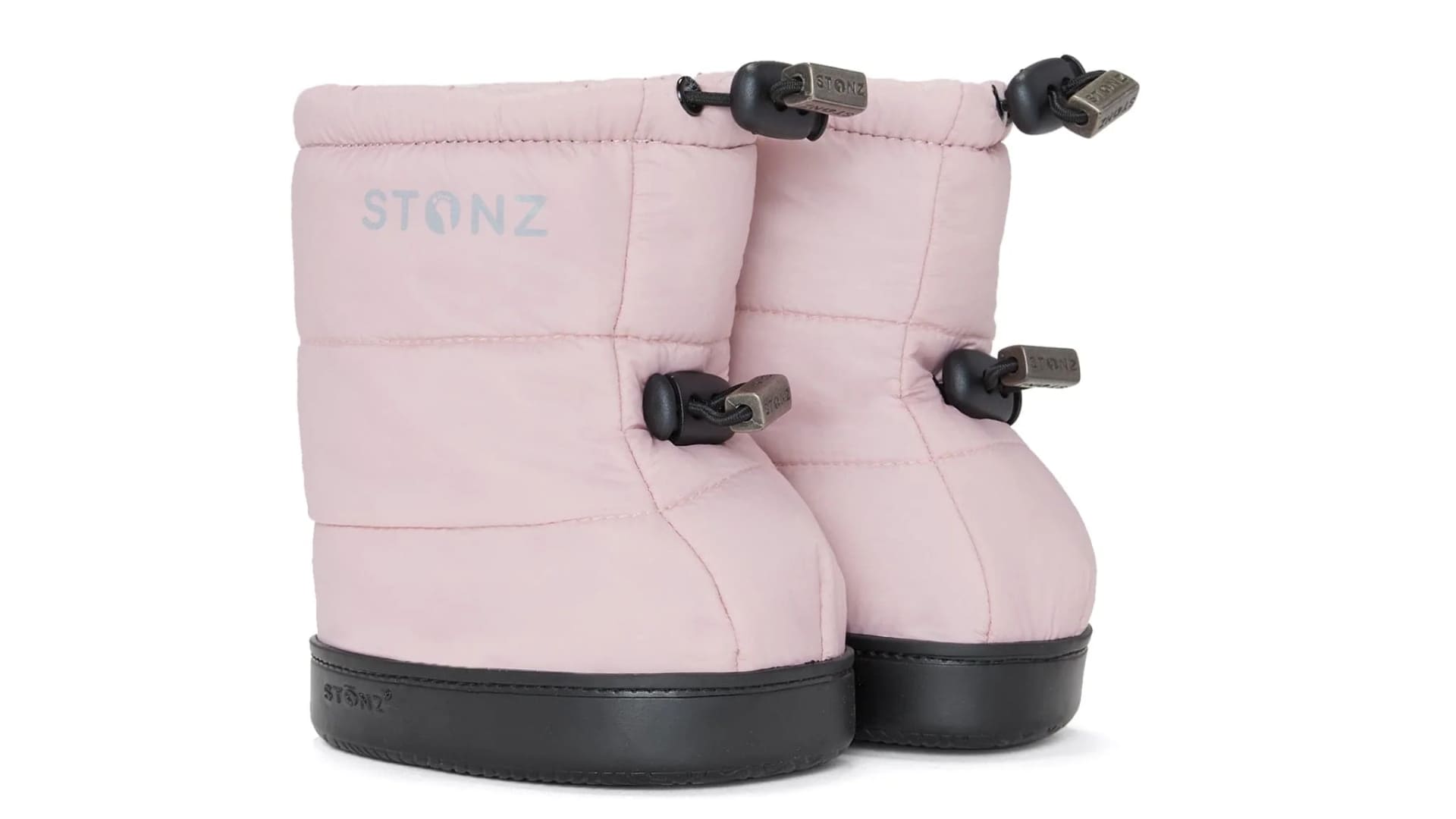
Stonz Puffer Booties
Keeping infants' feet warm is the main goal of a baby winter boot, and these Stonz puffer booties are made to do just in -4 degree Fahrenheit weather. (If you think that won't be warm enough, you can buy extra liners.)
Not what you want to look for in a baby shoe, many winter boots are tight, rigid, and have a firm sole. But these specific booties are more adaptable and gentler, so they won't impede your baby's foot's natural contour. The extra-large holes and toggle-secured elastics make them easy to slide on; the adjustable toggles may also help the shoes adapt to your child's growing foot.
It's important to remember that your infant can find it more challenging to walk in these shoes due to their looser fit. However, after testing them out, these booties are my top choice for young children who aren't yet ready for proper snow boots.
Best Baby Shoes For Orthotics

See Kai Run Dean Adapt
The See Kai Run Dean Adapt shoes are perfect for children wearing orthotics because of their extra-wide aperture, which makes it easier to get those tiny yet ungainly feet inside, and their extra-long, adjustable straps. If you require simply one shoe or two different sizes, the brand will still accommodate you. If you plan to wear the shoes with orthotics, they advise going up a size. Of course, newborns without orthotics also look terrific in these shoes. The straps are open and out of the way on a hinge to make it easier to put on the shoes. They are APMA approved and feature a wide toe box, just like other See Kai Run shoes.
Best Slip-On Baby Shoes
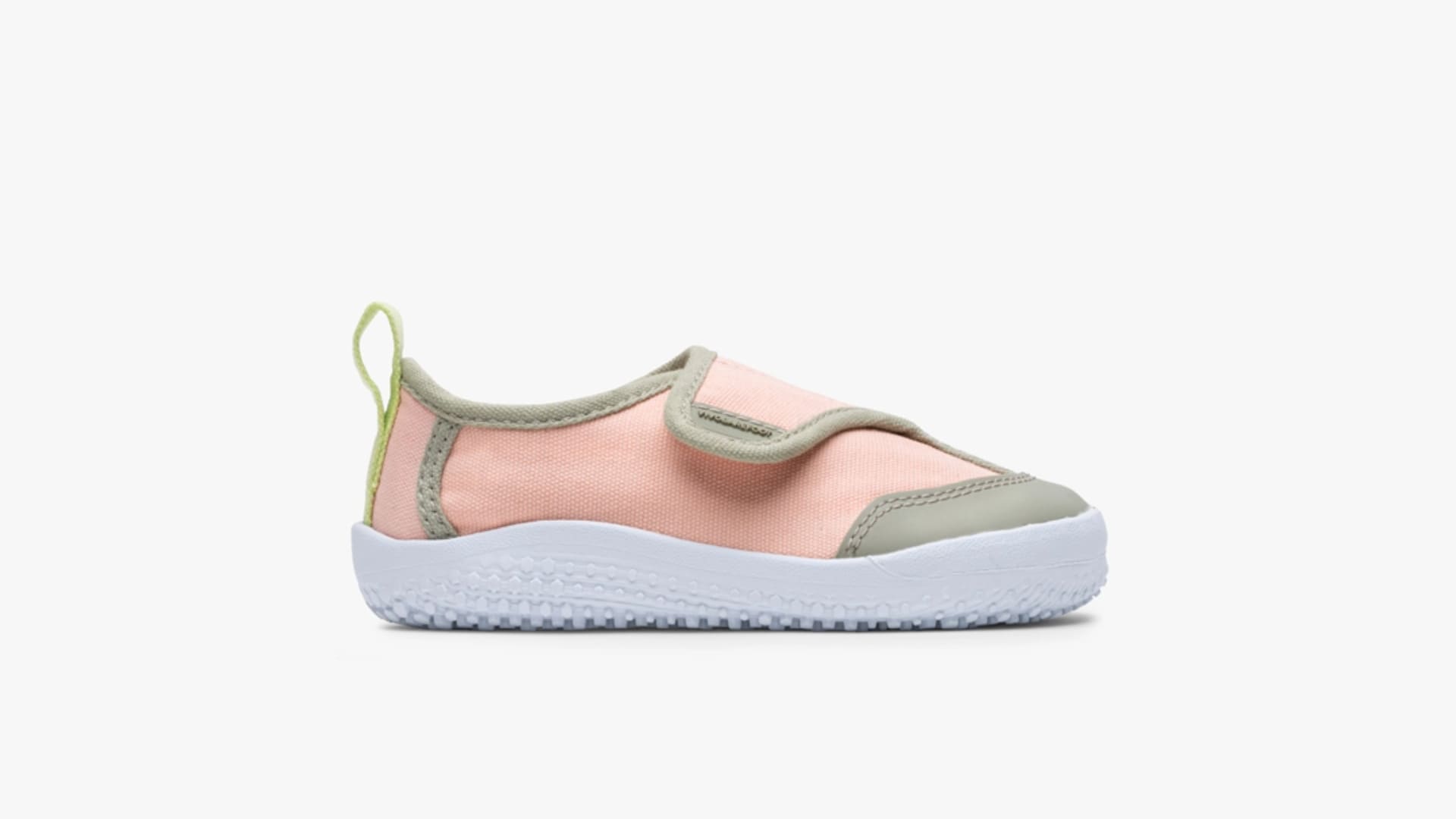
Vivobarefoot Gaia Toddlers
Baby shoes are made easy with the Vivobarefoot Gaia Toddlers' chic and minimalistic style. They are just the correct amount of flexible and supportive, and the bottom grip gives babies traction while they're first trying to walk, reducing the likelihood that they will fall. With a hook-and-loop fastening and heel tabs to aid in pulling them up, the shoes are simple to put on. They have no insole and a thin sole that are intended to resemble walking barefoot as much as possible. These are an excellent first shoe alternative to try if your infant is having trouble walking in somewhat bulkier or clunky shoes.
How We Chose The Best Baby Shoes
All the data that we provide passes through the hands of our experts, including dole, pediatricians, as well as specialists in the field of child development, because we attach great importance to the quality and reliability of the information that we offer to parents.
When Should Babies Start Wearing Shoes For Walking?
While wearing adorable booties outside or in a stroller is totally acceptable, babies who aren't walking yet don't actually need shoes.
If kids can wear socks or go barefoot whenever possible, it will be much healthier for their general growth of the feet. Infants don't need to wear shoes unless they are walking in areas that are dangerous for their feet. But as soon as newborns start walking, it can be beneficial to practice at home with shoes on for brief periods of time. By doing this, individuals could be more inclined to wear their shoes when they really ought to.
What Types Of Shoes Are Best For A Baby Learning To Walk?
It's preferable for babies to walk barefoot while they're learning at home. For those who are just beginning to walk, we want the shoe to resemble socks as much as possible. flexible and light-weight. A supple, non-slip sole is ideal.
When they need shoes for protection in public areas or outdoors, they should search for footwear with flexible, flat soles, supportive ankle and foot arch, a rounded toe box that fits the contour of the foot, and soft materials to avoid blisters.
If you are worried about your pregnancy, try Soula. Soul is AI assistant for Female Wellbeing.
Soula have been specifically designed for women, taking their unique challenges on their journey towards success and joy.
Soula is here 24/7 to provide women with emotional and informational support during the most challenging periods of their lives, aiming to prevent anxiety, burnout, and depression through neuroscience techniques and conversational AI.














